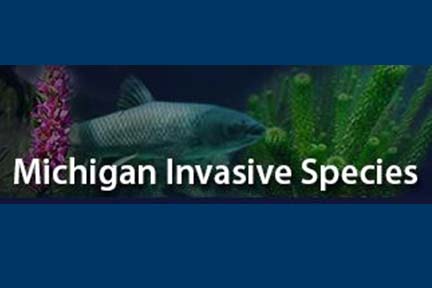News Release
| July 11, 2023 Contact: Joanne Foreman, 517-243-6450 It’s not Barbie Land: Learn from real people tackling invasive species issues in upcoming NotMISpecies webinarsIt’s perfectly OK if you’re eagerly awaiting the release of the live action “Barbie” movie this summer, where we anticipate she and Ken will get a taste of the less-than-perfect real world the rest of us call home. In the meantime, the NotMISpecies webinar series offers a chance to meet real researchers working to improve Michigan’s environment by better understanding invasive species, climate change and human behavior. The hourlong programs are free – just register online to watch live and participate in the question-and-answer session, or watch the recorded version at your leisure – with popcorn optional. July
AugustBoaters and anglers, primarily those who travel between waterways without cleaning their equipment, continue to spread aquatic invasive species. Why aren’t people cleaning when we know the risks of spread? Join Daniel Hayes from the MSU Department of Fisheries and Wildlife for “Why, Oh Why Won’t They Clean, Drain and Dry? Understanding Impediments to Boater and Angler Behavior Change” (9 a.m. Thursday, Aug. 10). Hayes and his students interviewed a thousand boaters and anglers to find the answers. He will share what they’ve learned about motivations and barriers to equipment cleaning, perceptions of invasive species spread and other interesting results. OctoberAsh, elm and chestnut trees once were as common in cities as the streets that bear their names. Our tree canopy today is much less diverse due to insects, disease, invasive species and poor species selection. Lawrence Sobson, Department of Natural Resources urban forester and partnership coordinator, explores the issue in “Where the Sidewalk Ends: Choosing Resilient Trees for Tomorrow’s Urban Environments” (9 a.m. Tuesday, Oct. 3). Sobson will offer examples of ideal tree species, explain how to assess urban sites and provide information to ensure the trees you choose can live for the next hundred years. November
The series will take breaks in September and December, leaving ample time to catch up on episodes you might have missed. Find recordings of all the past NotMISpecies webinars or register for new ones at Michigan.gov/EGLE/Outreach/ Michigan’s Invasive Species Program, a collaborative effort of the departments of Natural Resources; Environment, Great Lakes, and Energy; and Agriculture and Rural Development, coordinates and supports invasive species initiatives across the state and provides support through the Michigan Invasive Species Grant Program.
|
|||
   |



 Classical biological control returns with a showdown between invasive swallow-wort vines and Hypena opulenta, a defoliating moth that only develops on invasive swallow-worts. We’re bringing back Marianna Szucs from the Department of Entomology at Michigan State University for
Classical biological control returns with a showdown between invasive swallow-wort vines and Hypena opulenta, a defoliating moth that only develops on invasive swallow-worts. We’re bringing back Marianna Szucs from the Department of Entomology at Michigan State University for  Box tree moth (Cydalima perspectalis) was first detected in Michigan in fall 2022. This invasive pest, native to East Asia, poses a major threat to the boxwood plant, an ornamental shrub that is a valuable part of the U.S. (and Michigan) nursery and horticultural industry. Join Susie Iott, Michigan Department of Agriculture and Rural Development invasive species program specialist, for
Box tree moth (Cydalima perspectalis) was first detected in Michigan in fall 2022. This invasive pest, native to East Asia, poses a major threat to the boxwood plant, an ornamental shrub that is a valuable part of the U.S. (and Michigan) nursery and horticultural industry. Join Susie Iott, Michigan Department of Agriculture and Rural Development invasive species program specialist, for